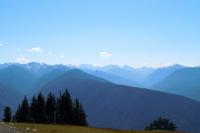-
HURRICANESResearchers Predicting Well Above-Average 2024 Atlantic Hurricane Season
Hurricane researchers are predicting an extremely active Atlantic hurricane season in their initial 2024 forecast. The researchers cite record warm tropical and eastern subtropical Atlantic sea surface temperatures as a primary factor for their prediction of 11 hurricanes this year.
-
-
SurfacesBGU Scientists Develop Anti-Coronavirus Surface Coating Based on Nanomaterials
In light of the possibility that the virus can spread through contaminated surfaces, it is important to be able to sterilize surfaces with high contamination potential, such as doorknobs, elevator buttons or handrails in public areas in general, and in hospitals and clinics in particular. However, current disinfectants are mainly based on chemicals such as poisonous sodium hypochlorite (bleach) or alcohol, both of which provide only a temporary measure until the next exposure to the virus. Israel’s Ben Gurion University said that Prof. Angel Porgador, from the Department of Microbiology, Immunology and Genetics at BGU and the National Institute of Biotechnology in the Negev (NIBN), and Dr. Mark Schvartzman, Department of Materials Engineering at BGU, are developing novel surface coatings that will have a long term effect, and contain nanoparticles of safe metal ions and polymers with anti-viral and anti-microbial activity.
-
-
Water securityMapping corrosive groundwater across the U.S.
Approximately 44 million people in the United States rely on groundwater from wells as their water source. A new study found that untreated groundwater from twenty-five states could be potentially highly or very highly corrosive, a recent study finds. Corrosive water, while itself not dangerous, can dissolve lead and other metals from pipes, plumbing, and other metal surfaces into drinking water. While the quality of municipal water supplies is regulated and treated, domestic well owners are responsible for the treatment of their personal water supplies.
-
-
WaterPutting a price on groundwater, other natural capital

Most people understand that investing in the future is important, and that goes for conserving nature and natural resources, too. But in the case of investing in such “natural” assets as groundwater, forests, and fish populations, it can be challenging to measure the return on that investment. A Yale-led research team has adapted traditional asset valuation approaches to measure the value of such natural capital assets, linking economic measurements of ecosystem services with models of natural dynamics and human behavior.
-
- All
- Regional
- Water
- Biometrics
- Borders/Immig
- Business
- Cybersecurity
- Detection
- Disasters
- Government
- Infrastructure
- International
- Public health
- Public Safety
- Communication interoperabillity
- Emergency services
- Emergency medical services
- Fire
- First response
- IEDs
- Law Enforcement
- Law Enforcement Technology
- Military technology
- Nonlethal weapons
- Nuclear weapons
- Personal protection equipment
- Police
- Notification /alert systems
- Situational awareness
- Weapons systems
- Sci-Tech
- Sector Reports
- Surveillance
- Transportation
Advertising & Marketing: advertise@newswirepubs.com
Editorial: editor@newswirepubs.com
General: info@newswirepubs.com
2010-2011 © News Wire Publications, LLC News Wire Publications, LLC
220 Old Country Road | Suite 200 | Mineola | New York | 11501
Permissions and Policies
Editorial: editor@newswirepubs.com
General: info@newswirepubs.com
2010-2011 © News Wire Publications, LLC News Wire Publications, LLC
220 Old Country Road | Suite 200 | Mineola | New York | 11501
Permissions and Policies
